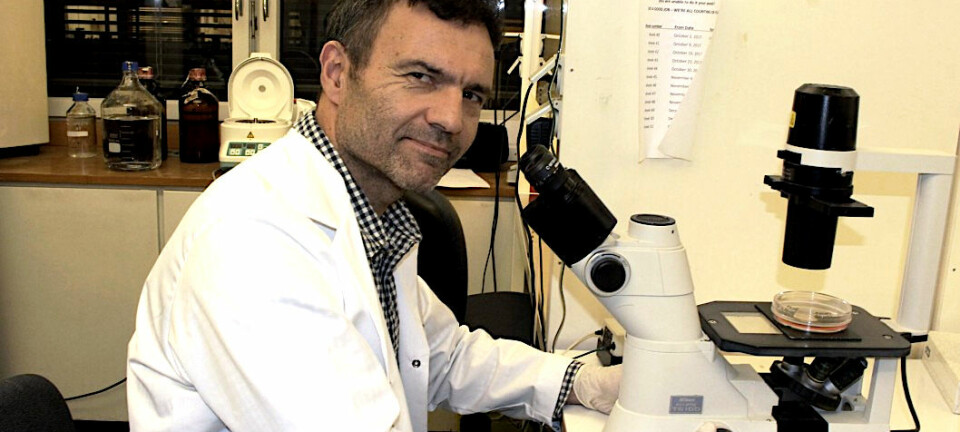This article is produced and financed by University of Oslo - read more
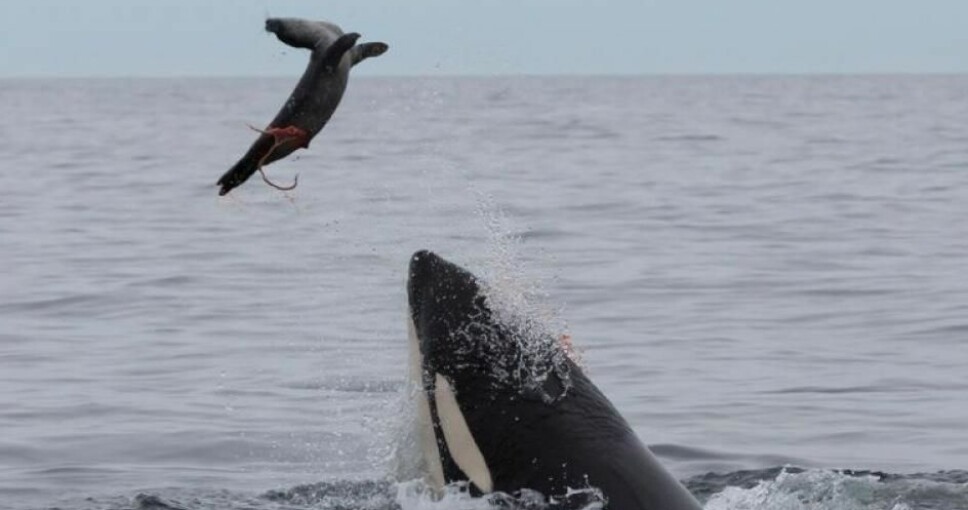
Seal-eating killer whales accumulate large amounts of harmful pollutants
Killer whales along the Norwegian coast have long classified as fish-eaters. New research shows that some of them also eat seals - and accumulate large amounts of harmful pollutants.
Research of killer whales in the southern Atlantic ocean and Mediterranean have shown that their blubber contains high levels of pollutants called PCB, whilst killer whales found along the Norwegian coast have been assumed to be healthy and at low risk from pollution. This is because when researchers took samples from nine Norwegian killer whales in 2002, they found lower levels of pollutants than other populations.
But now, a new study has shown that killer whales along the Norwegian coast also eat seals, and these seal-eating whales are really polluted. They have up to four times as high levels of the pollutant PCB in their blubber than other whales in the population that just eat fish, and twice as high levels of mercury in the skin.
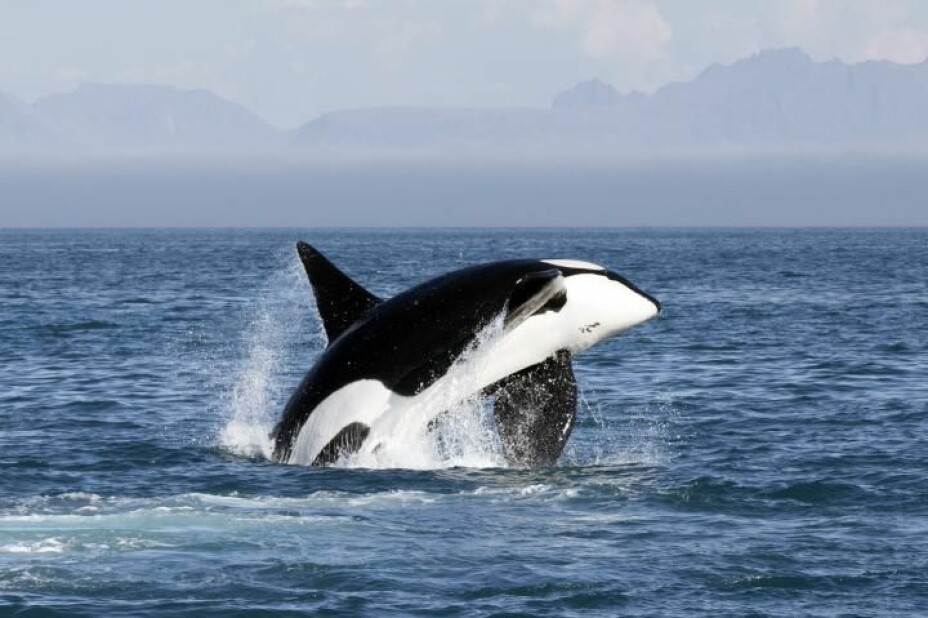
Risk of health effects
“We found that all the seal-eaters we investigated had such high levels of pollutants in the body that it exceeded a threshold value for a risk of health effects. This means that they are in danger for a suppressed immune system, hormone disruption, and reduced ability to reproduce. We also found two killer whales which had levels exceeding an even higher threshold value for a large risk of health effects” explained researcher Clare Andvik at the Department of Biology (IBV) at UiO.
“All the seal-eating killer whales were over the first threshold for a risk of health effects (10 micogram per gram lipid weight). For comparison, there were just 40% of the fish-eating killer whales over this threshold” supplements Professor Katrine Borgå at IBV.
Borgå was the project leader for this first investigation of pollutants in Norwegian killer whales since 2002, and was main supervisor for Clare Andvik as she worked on her master thesis. The results of the research are published in an article recently published in the scientific journal Scientific Reports. The researchers also looked for other, new types of pollutants in the killer whales, such as brominated flame retardants.
“We found these pollutants as well, although the levels were low. We don’t have any threshold levels for health effects for these newer pollutants”, says Borgå.
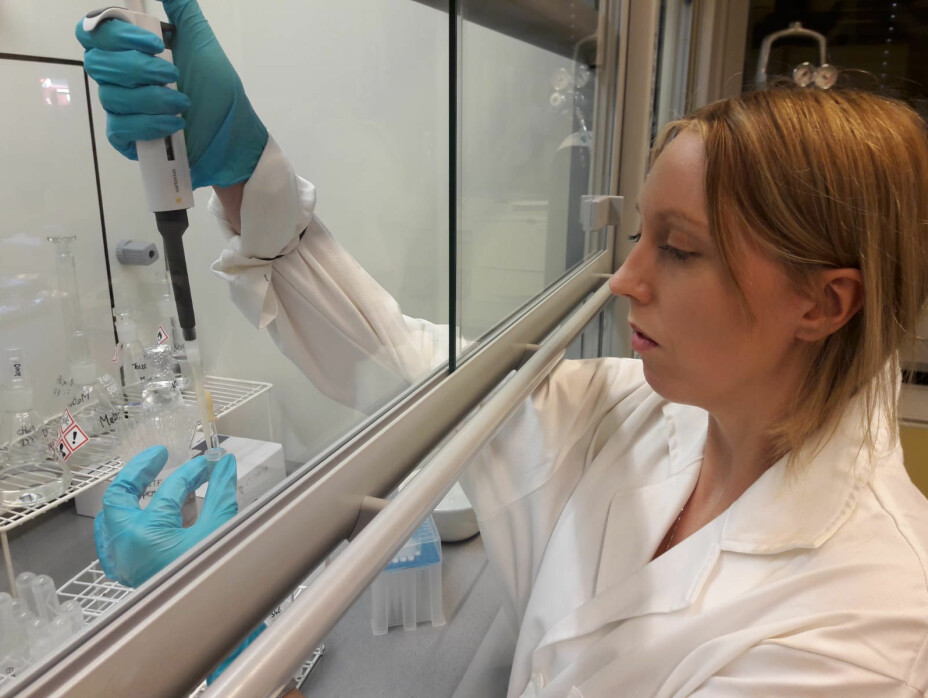
At higher risk than previously assumed
“The main aim of this research was to quantify the levels of PCBs in the killer whale’s blubber layer, and mercury in the skin, and compare the levels in the seal and fish-eating individuals. Our results show that killer whales along the Norwegian coast are at higher risk from the effects of pollution than previously assumed, because they also eat seals which occupy a higher trophic level” summarises Clare Andvik.
Trophic level is a term which researchers use to describe where in the food chain different species can be found. The first trophic level is made up of the so-called “primary producers” – plants, algae etc. – which use photosynthesis to sustain themselves. In the ocean, the algae, phytoplankton and cyanobacteria are eaten by zooplankton and other herbivores, which are therefore on the second trophic level. Herring primarily eat small crustaceans, and are therefore on trophic level number three, whilst killer whales which eat herring and other fish are on the fourth trophic level.
But seals also eat fish, and this has consequences for killer whales which eat seals. Pollutants are persistent and can accumulate in organisms – biomagnification – such that organisms which are found on a high trophic level – high up in the food chain – will typically contain much higher levels of pollutants than organisms lower down in the food chain.
“In this instance, we expected that the seal-eating killer whales would contain approximately 10 times as much pollutants as the fish-eaters, if they just ate seal. But instead, we see that the seal-eaters had four times higher pollutants. This is an indication that the seal-eaters also eat a lot of fish. The fish-eaters, on the other hand, eat pretty much just fish” comments Borgå.
The researchers are the first in the world to have measured mercury in killer whale skin.
“We investigated mercury levels in skin, and PCB in blubber from the same animals. We found a high correlation between the levels, which is to say that those whales with high PCB levels also had high mercury levels. This is an important find, because it is easier to take samples of skin than blubber. We need just a tiny sample of the outer skin layer, whereas it is more complicated to get a plug of blubber” explains Borgå.
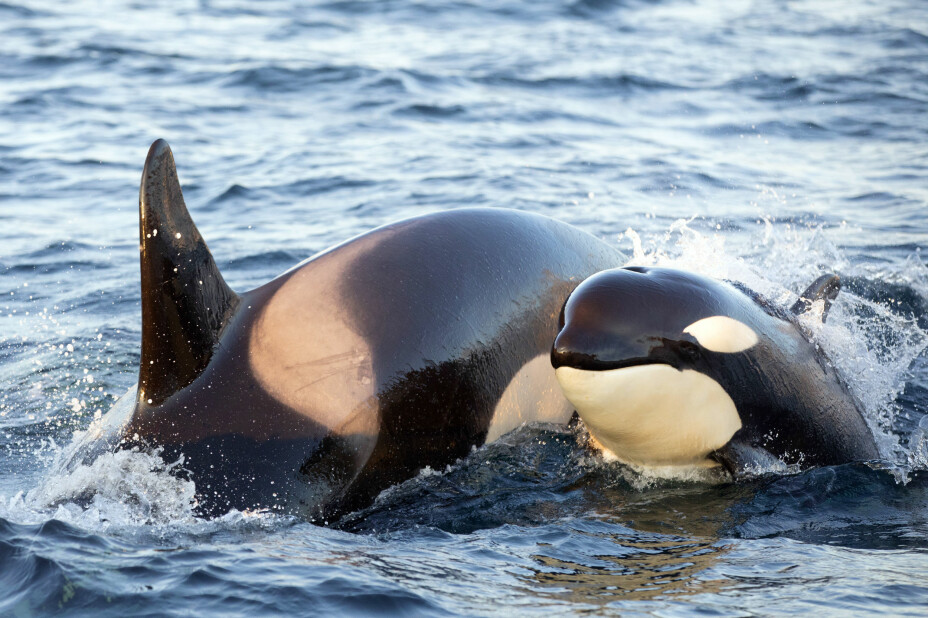
Killer whales hunt herring
This story began when the French marine biologist Eve Jourdain moved to Andenes, Vesterålen in 2013 to work as a naturalist on whale-watching boats. Locals told her that killer whales could only be seen in the winter, when the whales followed the enormous stream of herring that shelter in the fjords in northern Norway in the winter months. Hundreds of killer whales can gather to feed on the herring – using a specialised hunting technique of scaring the fish into a tight ball before hitting them unconscious with a powerful slap of the tail.
In 2015, Eve Jourdain and her partner Richard Karoliussen established the non-profit research organisation Norwegian Orca Survey. They soon discovered that killer whales can be found in the oceans around Andenes the whole year, and not just in the winter. They also observed that some killer whales hunted seals.
Clare Andvik is originally from the UK, and moved to Norway in 2014 to study biology, with whales as her main interest. In 2016, she contacted Norwegian Orca Survey and asked if she could volunteer with them during the summer, and was welcomed with open arms. During the course of the summer, Andvik found out that Norwegian Orca Survey were planning to take tissue samples from the whales, and she began to think that this could be used as material in a master in toxicology. She contacted Katrine Borgå, who had decades of experience with similar research, and Andvik was accepted as master student under Borgå’s supervision. Researchers from NMBU and NIVA were also invited to make up an interdisciplinary “dream team”.
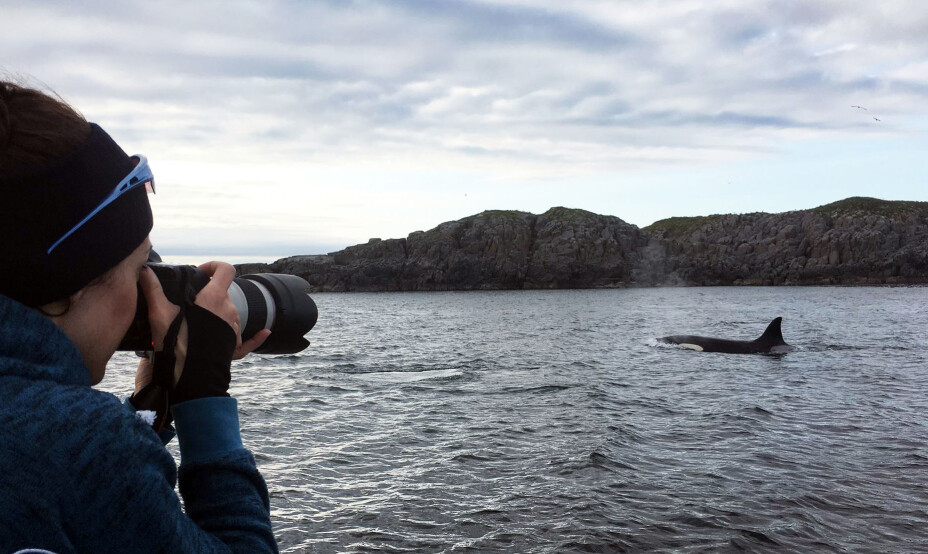
Observations and isotope analysis
The researchers from Norwegian Orca Survey observed killer whales eating both fish and seal, and strived to obtain tissue samples from both groups. In addition to the visual observations, researchers from UiO have analysed stable isotope levels in the skin. This gives information about the diet, confirming the two dietary groups, as well as information on how often the killer whales eat seals.
“We have analysed PCB levels in seven seal-eaters and 24 fish-eaters – and mercury in 10 seal-eaters and 28 fish-eaters. The reason we have analysed more whales for mercury than for PCBs is because it is easier to get good skin samples than blubber samples” explains Borgå.
And indeed, it is challenging to obtain tissue samples from killer whales!
“We have spent many hours in the boat, and we need a good amount of luck to not only find a pod of killer whales, but also get close enough to take samples. Luckily Richard Karoliussen is extremely talented at finding killer whales, and driving the boat in such a way that the whales are not disturbed and we can get close enough to take samples. We take biopsy samples using a specially constructed dart which is shot out from a type of air rifle. The killer whales don’t react much to being hit by the dart, they behave in a similar way to how us humans would react to an insect bite” explains Andvik.
Fun fact! When the researchers compared photos of killer whales observed today with earlier photos, they found that some of the seal-eaters had also been observed eating seals in the late 1980s! Norwegian Orca Survey, in collaboration with other researchers, have created a comprehensive catalogue with pictures of the all the individual killer whales throughout the years, so whales can be identified over a long time.
Persistent pollutants
Professor Borgå points out that PCB is a pollutant which has been banned in Norway since 1980, and long regulated in many other countries. The researchers nevertheless find high levels when they investigate animals in the Arctic and along the Norwegian coast.
“One thing which is special about this study is that we had expected to find lower levels of PCBs than when they were first sampled in 2002. But we find the opposite! Whilst levels in the fish-eaters have gone a little bit down throughout these 18 years, the levels in the seal-eaters are higher than was found the first time” highlights Borgå.
This reflects that huge amounts of PCBs were used in the world before they were banned, and they are so persistent it takes a long time to break down in the environment.
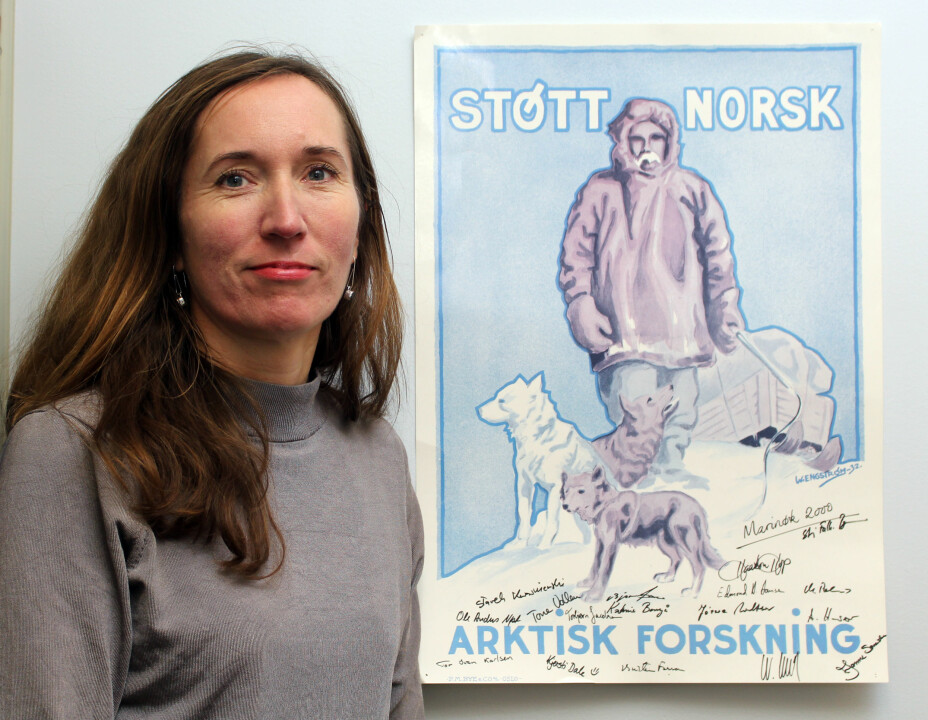
The research continues
Killer whales in other parts of the world can eat octopus, cod, rays and sharks, and pods of killer whales can even attack larger whales. But along the Norwegian coast, it seems that fish and seal make up the most important parts of the diet.
The Polar Institute has estimated the total number of killer whales in the Norwegian and Barents Sea to be at about 3000 individuals, but it is still unclear how many of them eat seals. This is something Norwegian Orca Survey and Borgå would like to investigate. With stable isotopes as dietary markers, it is possible to say something about the trophic level of animals in relation to each other, but not the exact composition of the diet.
Professor Borgå also highlights that the threshold values that are used to analyse the potential health effects of the pollutants is defined primarily from experiments on rats and mice, or in the best-case, extrapolation from other marine mammals. But it is difficult to compare the health effects of pollutants across different species, so the researchers now want to undertake a new study where the actual harmful effects of the pollutants can be measured within the whales.
“We are also planning a study using stable isotopes in the teeth from killer whales. This is because teeth can reflect what the killer whales have eaten throughout their whole lives. Killer whales can get really old: The average life expectancy is 30 to 50 years for males, and females can be 70 to over 100 years old! These studies can therefore give us a good impression of changing dietary preferences in the population over a long time” explains Borgå.
“This research is valuable because killer whales can live a long time, and these pollutants accumulate in the blubber throughout their lives. This means that killer whales can be used an “indicator” species, both for the condition of the ocean and also for identifying which pollutants can accumulate and have the potential to cause harm” supplements Andvik.
Clare Andvik was the first author of the new scientific article, which she wrote in collaboration with Borgå and four other researchers. The article is based on Andvik’s master thesis which was completed in 2019, and won her the University of Oslo prize for the best master thesis connected to the UN’s sustainability goals. The article is also a part of Eve Jourdain’s Dr Philos, which was delivered to UiO in Spring 2020.
The master thesis led to a tighter collaboration between UiO, NMBU and Norwegian Orca Survey. The researchers are now collaborating on a new project funded by the Climate and Environment Department’s Arctic 2030 programme. The focus of the research is analysing the pollutant levels in whales that have stranded along the Norwegian coast over the past years. Results from this study will be coming out soon.
References:
Clare Andvik et.al: Preying on seals pushes killer whales from Norway above pollution effects thresholds. Scientific Reports, July 17, 2020. https://doi.org/10.1038/s41598-020-68659-y
Eating seals means Norwegian orcas are at higher risk from pollution than previously assumed, blog on Nature Research Ecology & Evolution Research Community, July 17, 2020
Eve Jourdain et.al: Isotopic niche differs between seal and fish‐eating killer whales (Orcinus orca ) in northern Norway. Ecology and Evolution, April 8, 2020. https://doi.org/10.1002/ece3.6182
Eve Jourdain et.al: First longitudinal study of seal-feeding killer whales (Orcinus orca) in Norwegian coastal waters. Plos One, June 30, 2017. https://doi.org/10.1371/journal.pone.0180099








